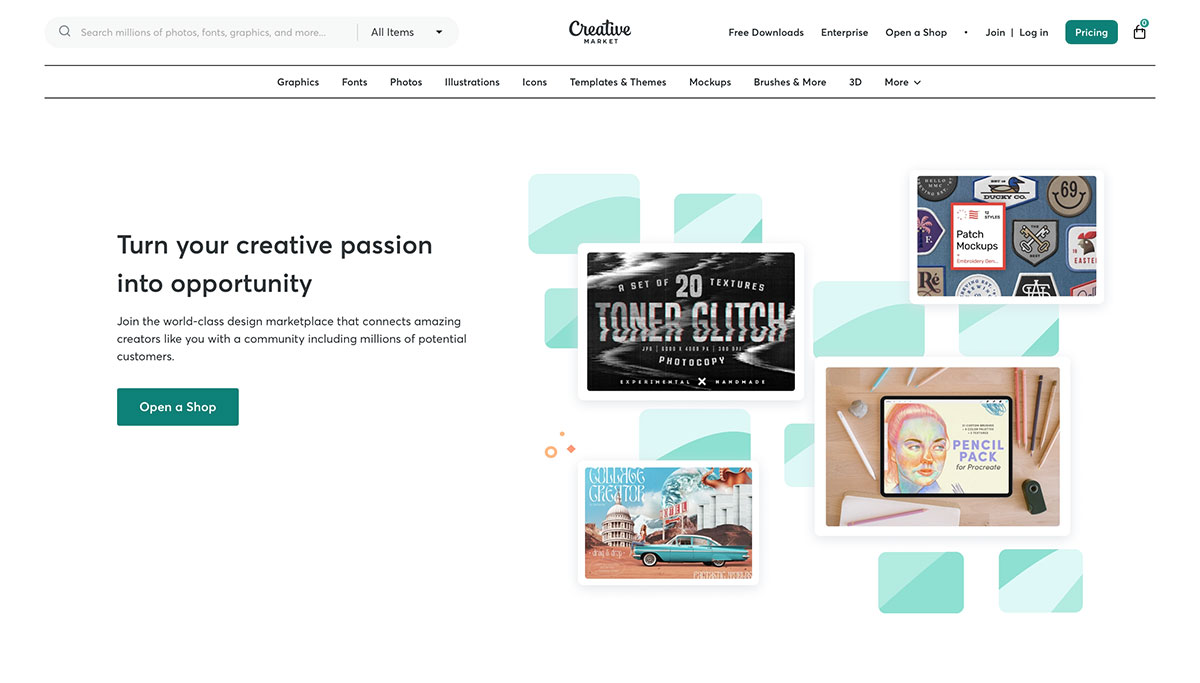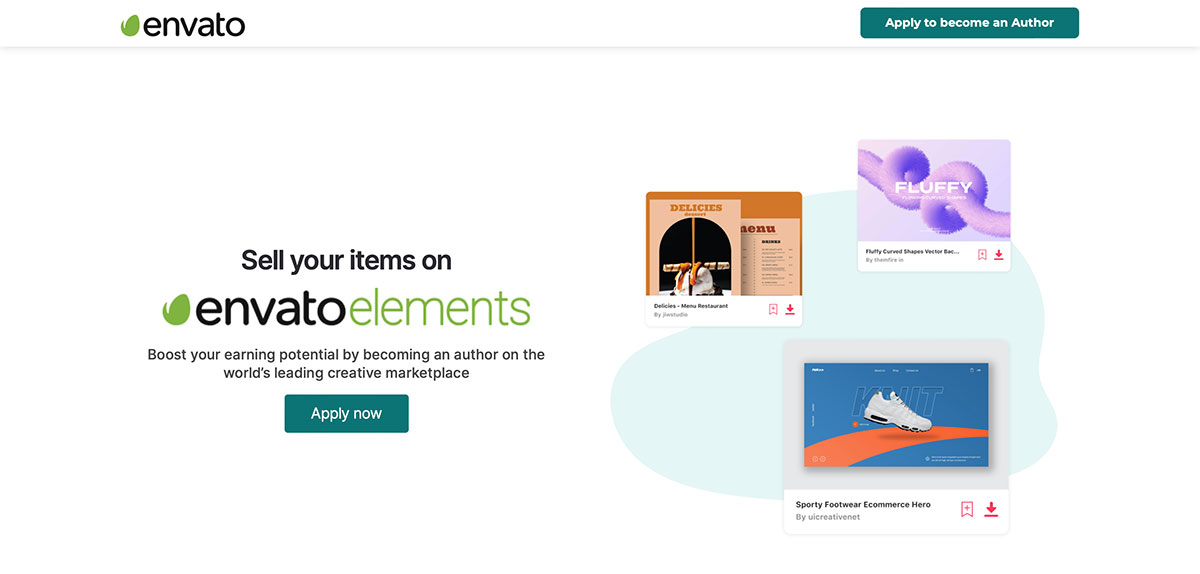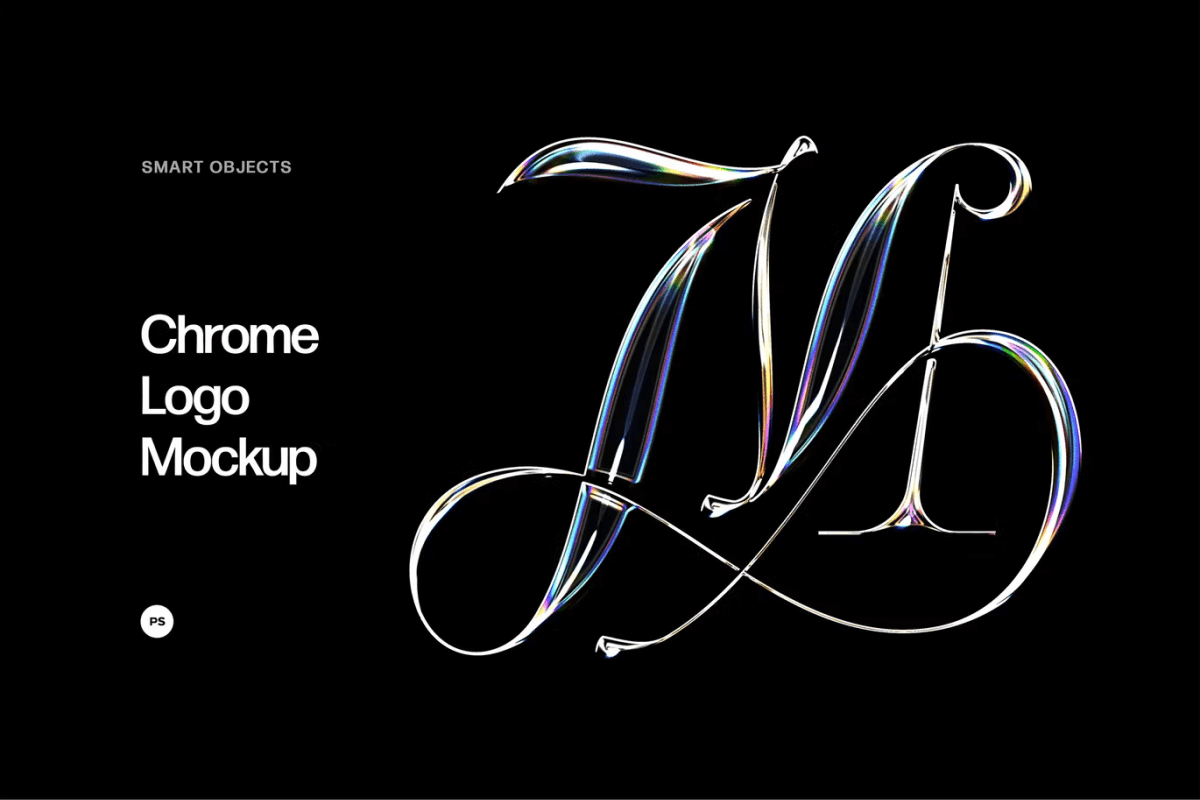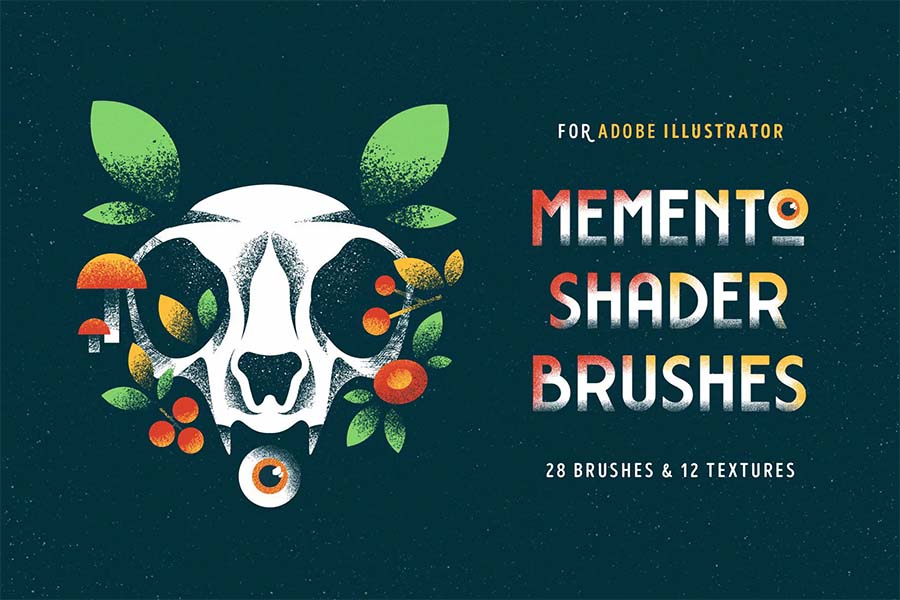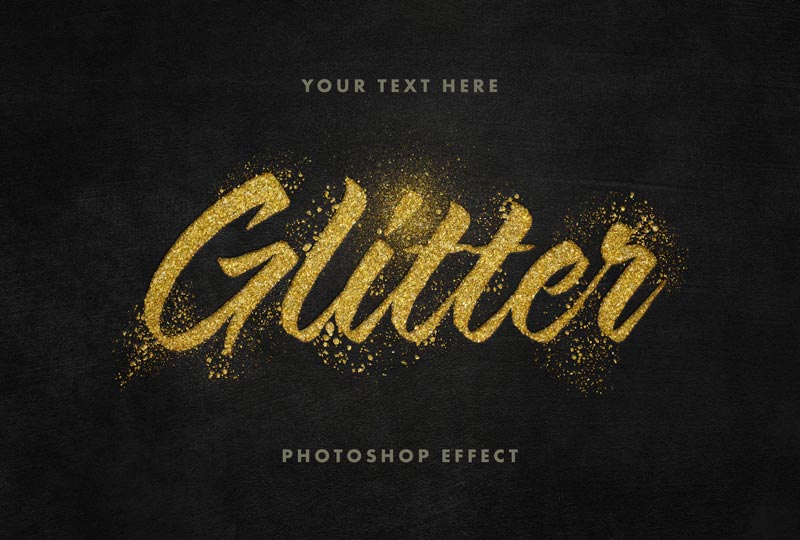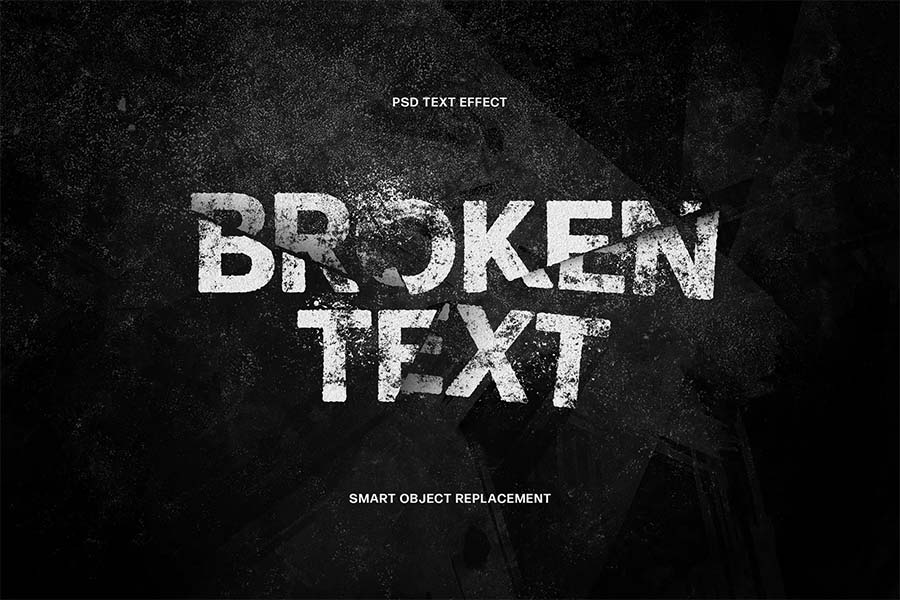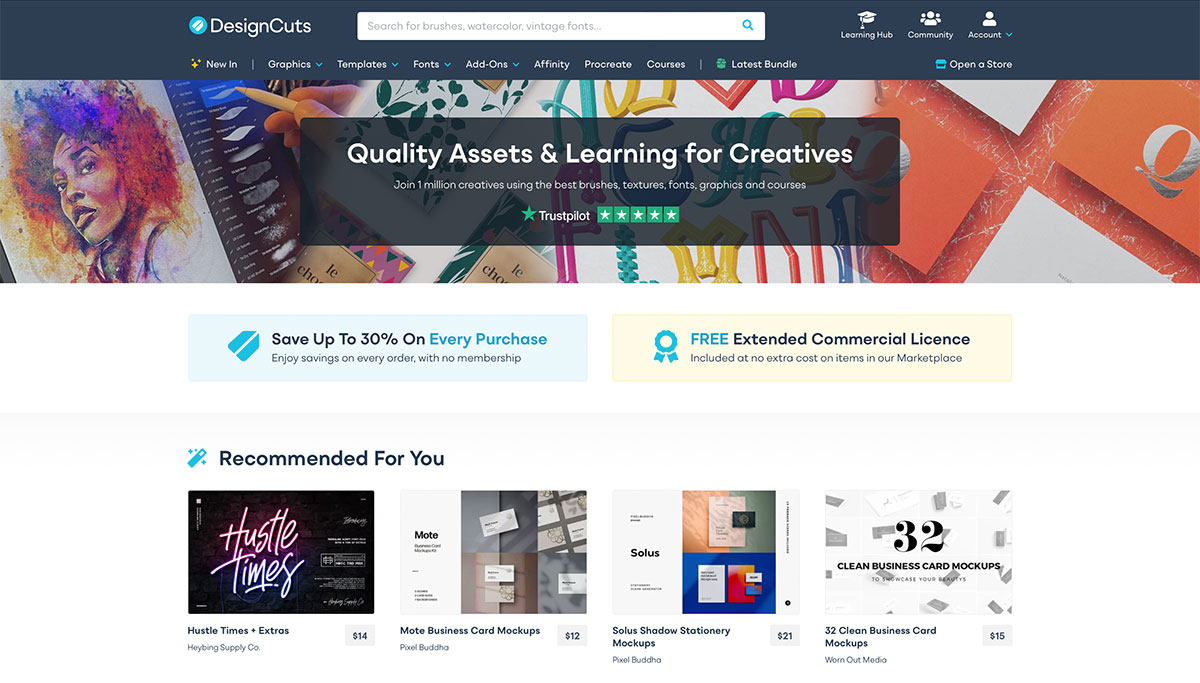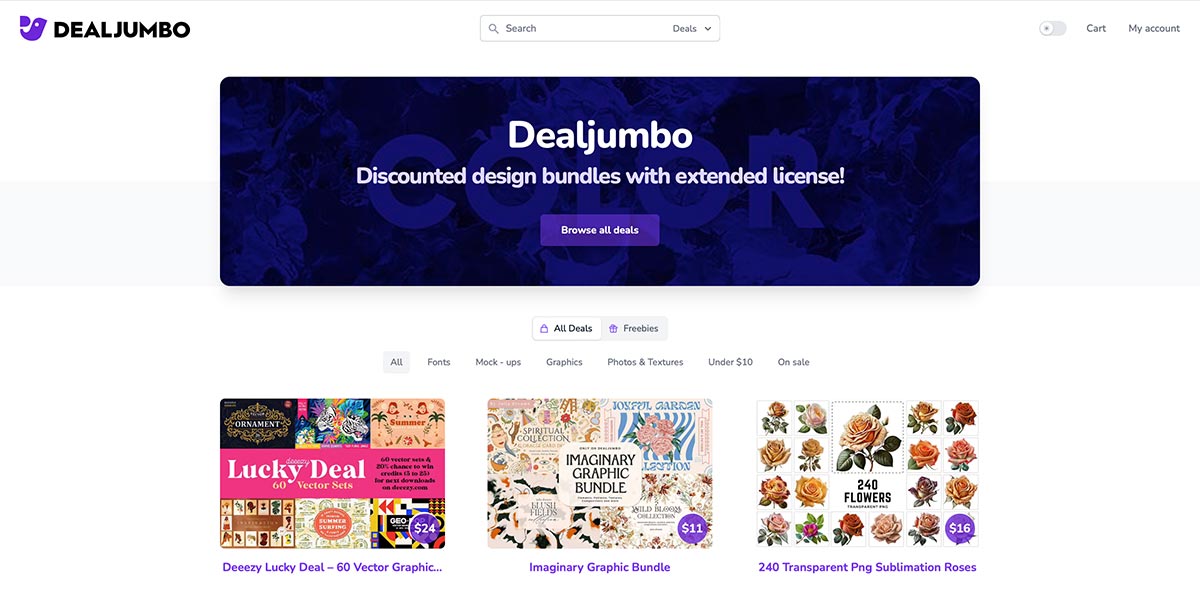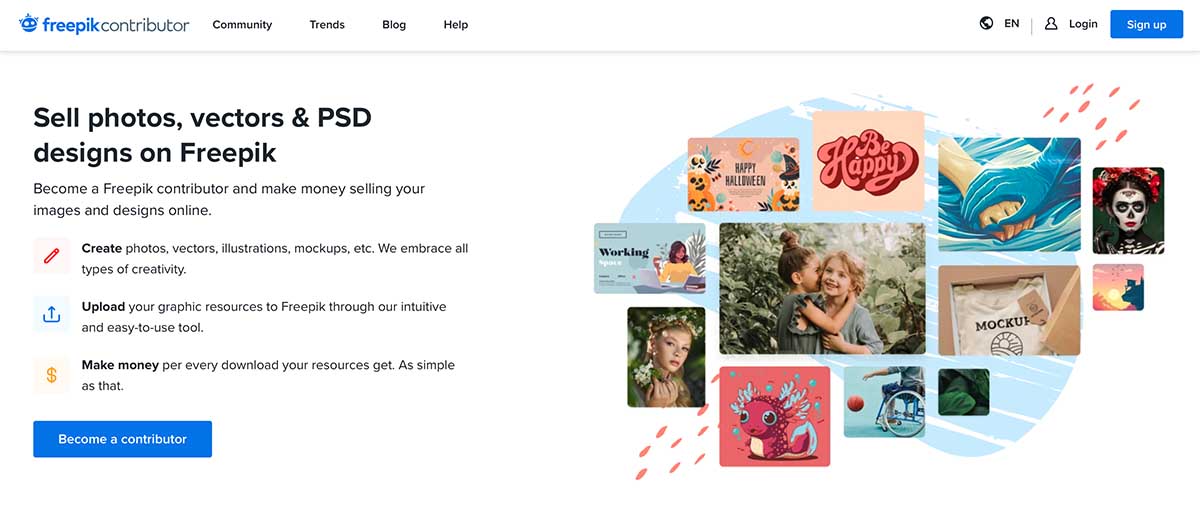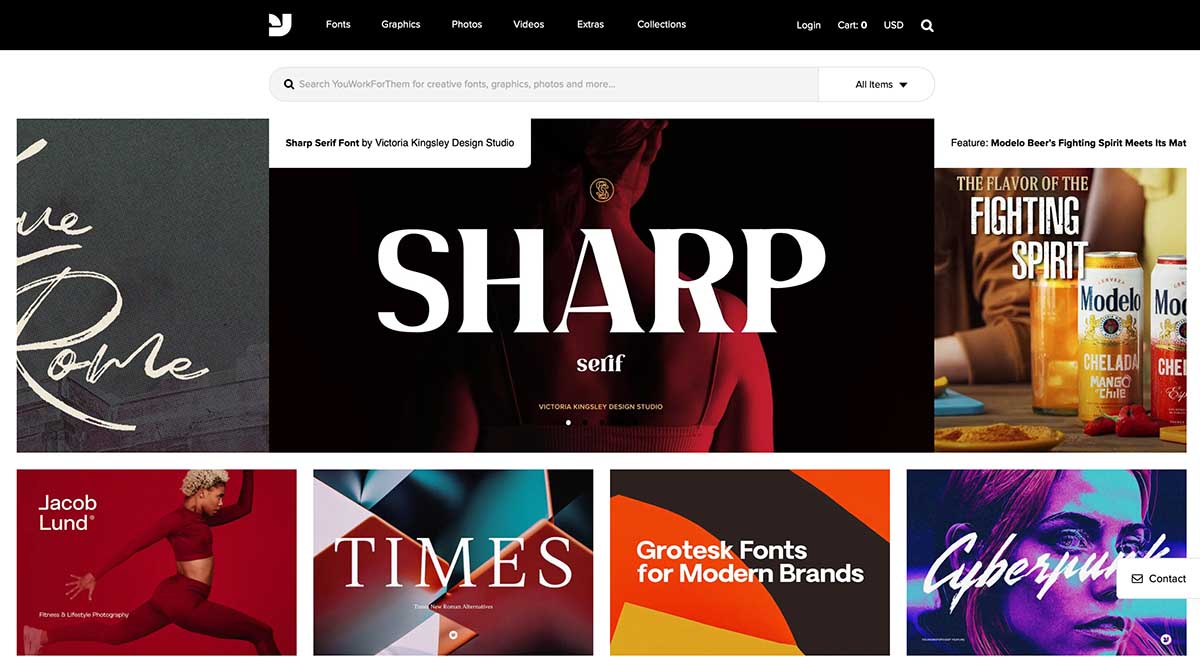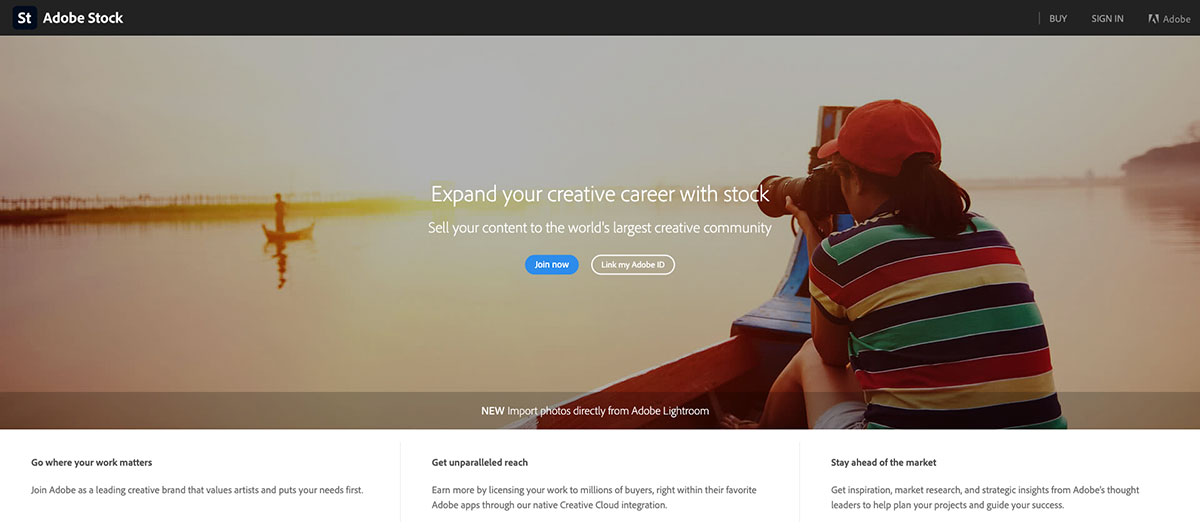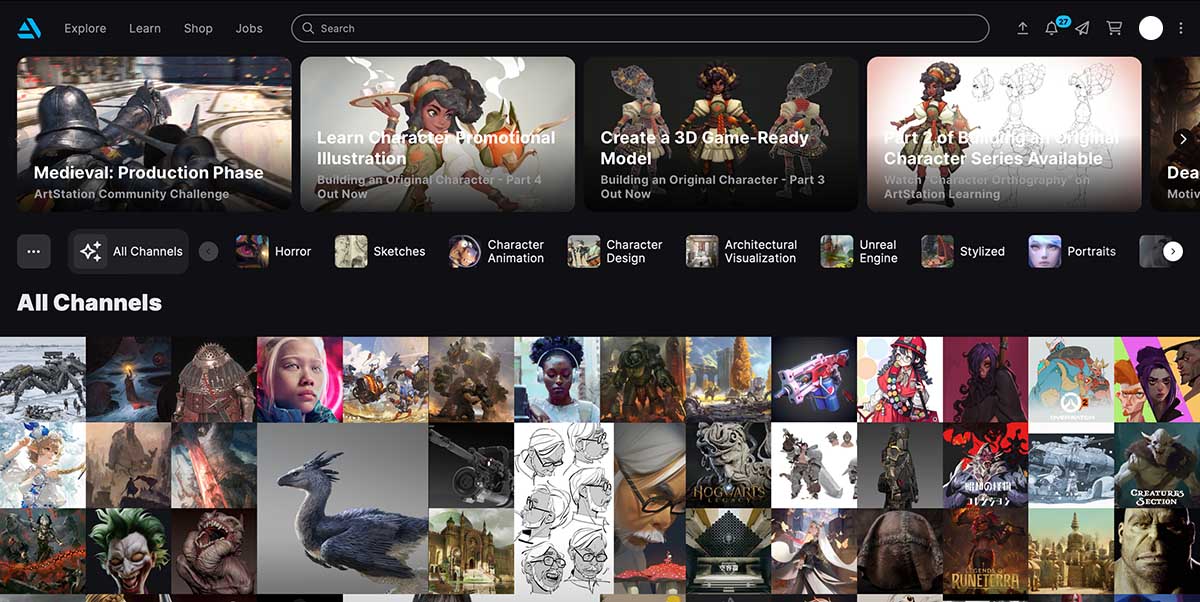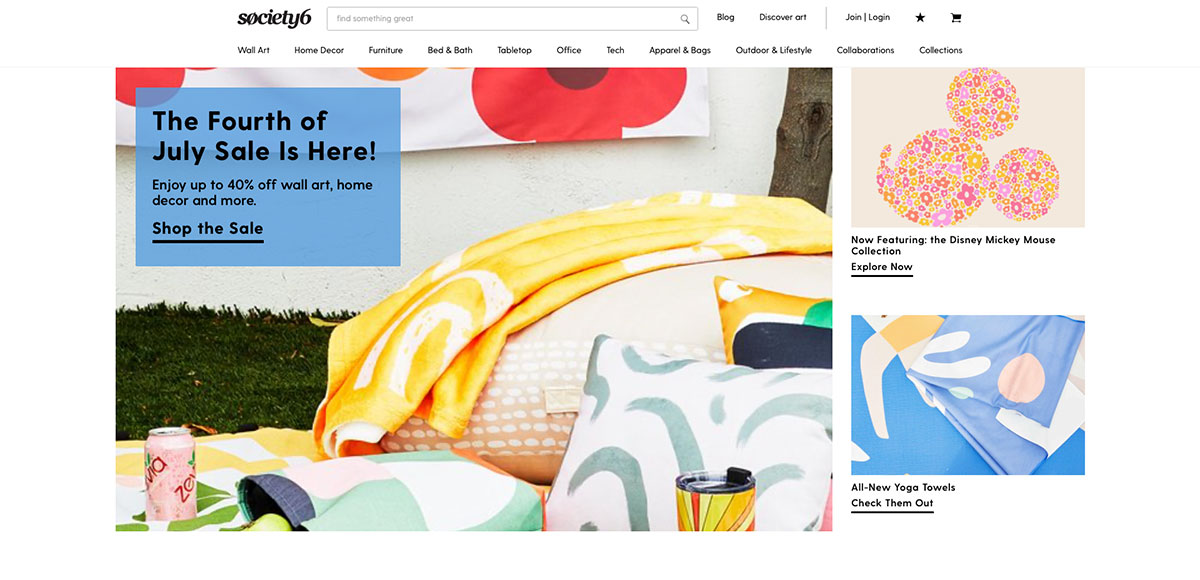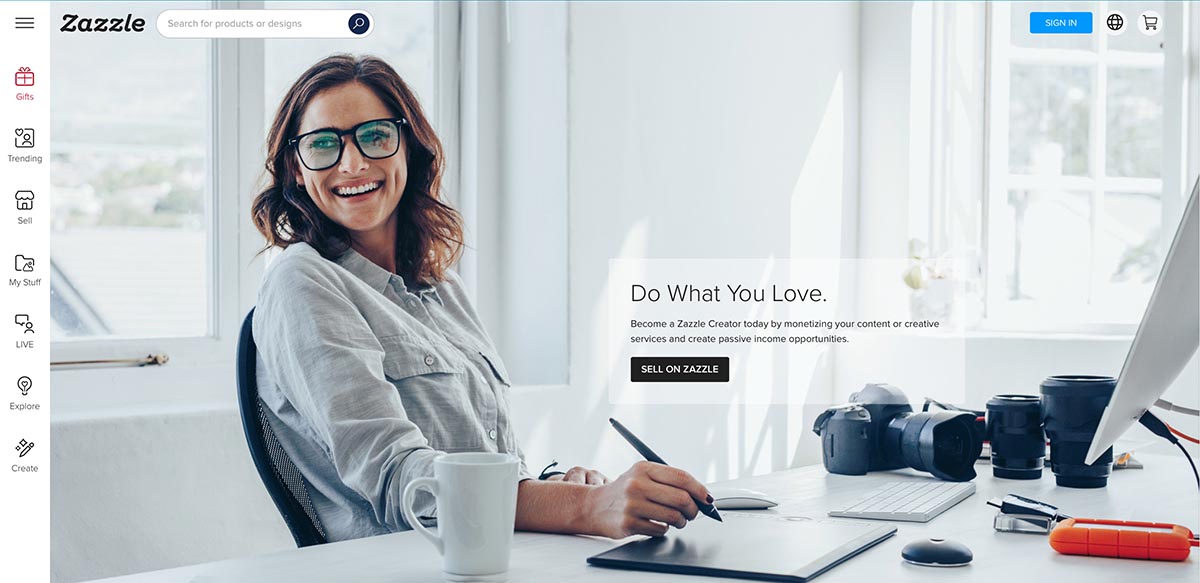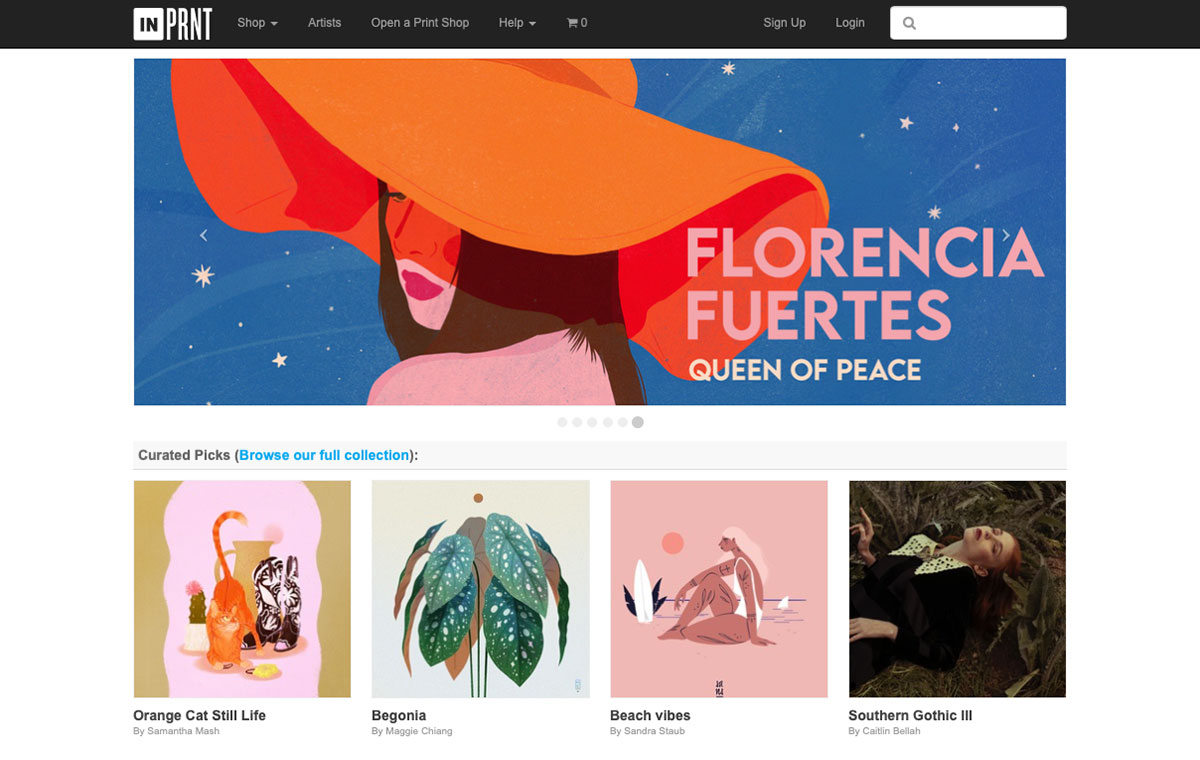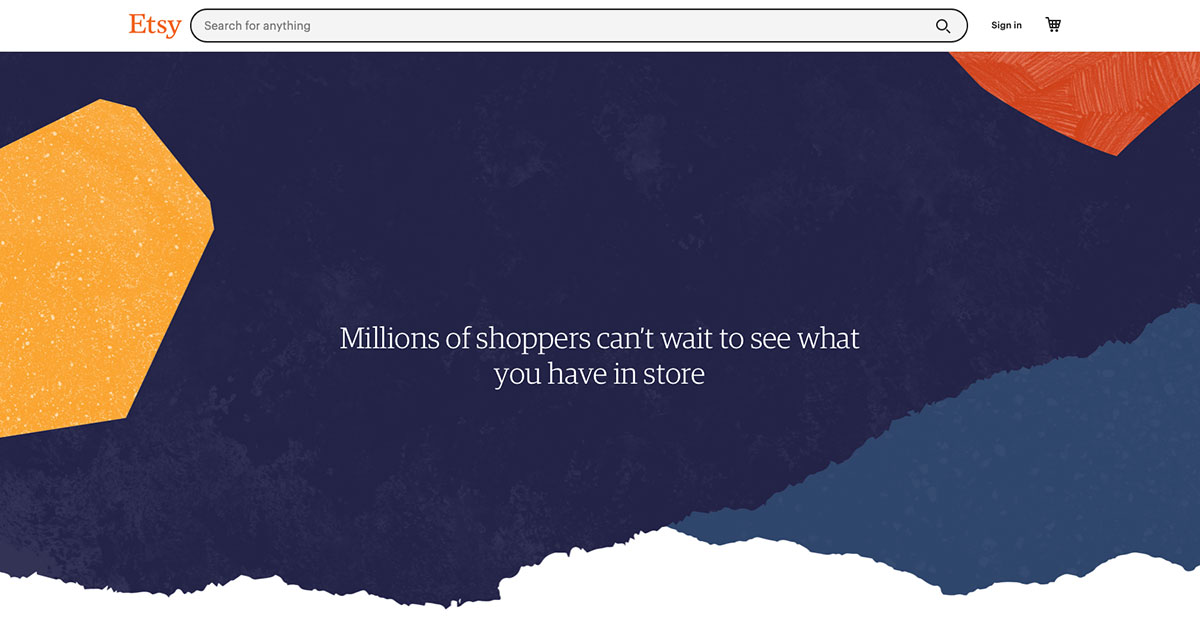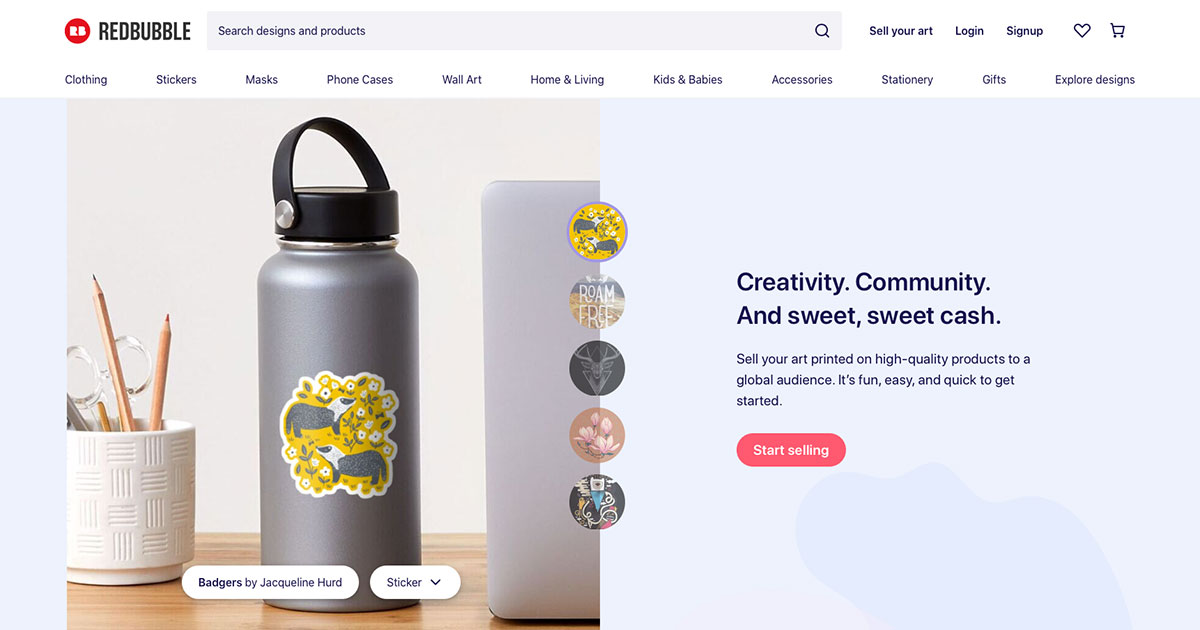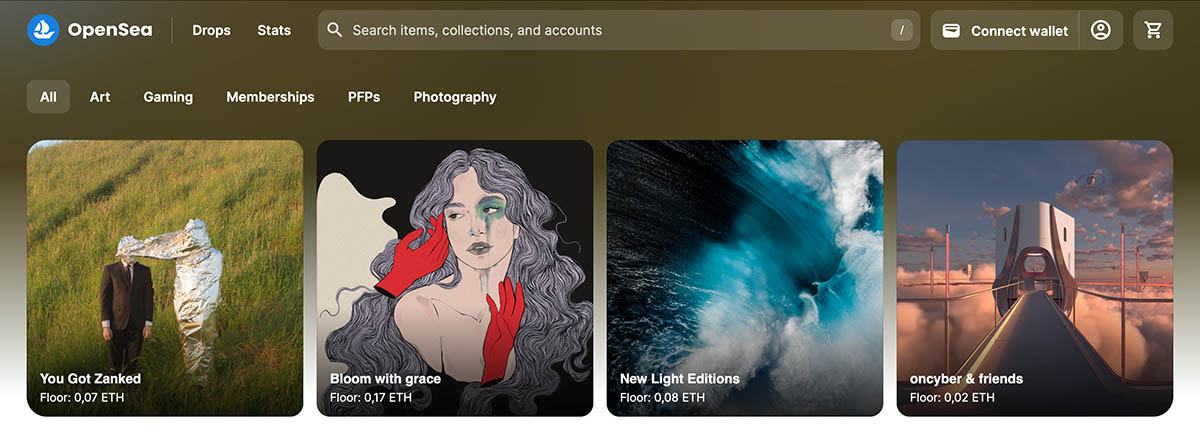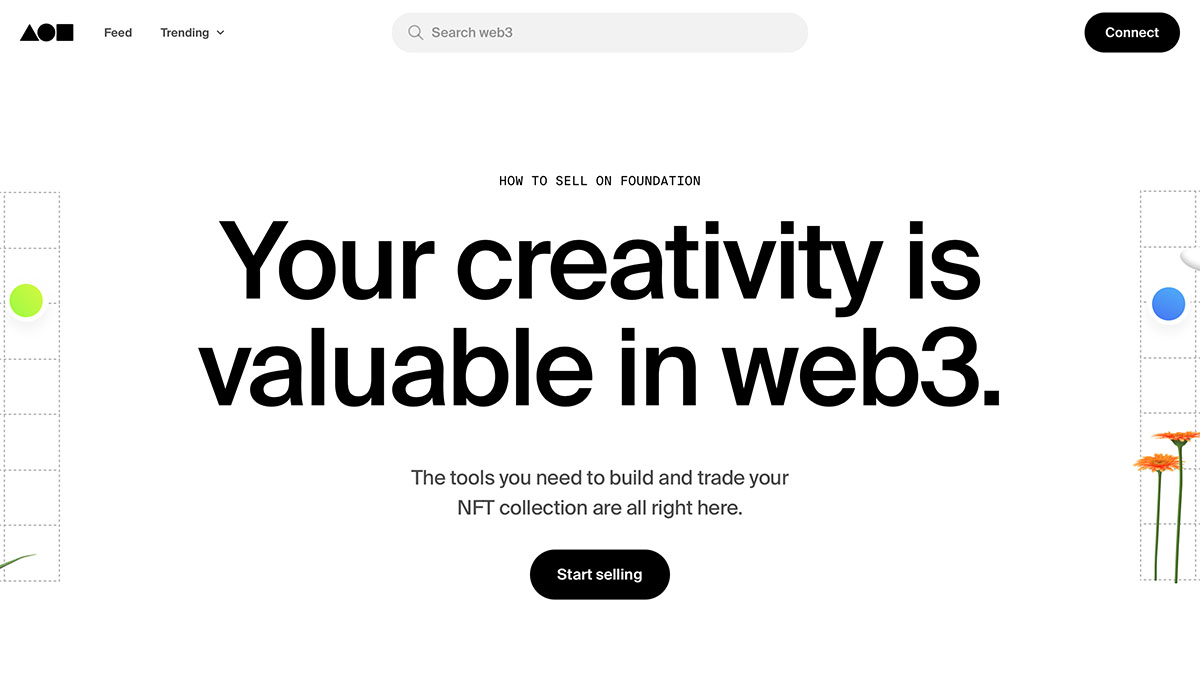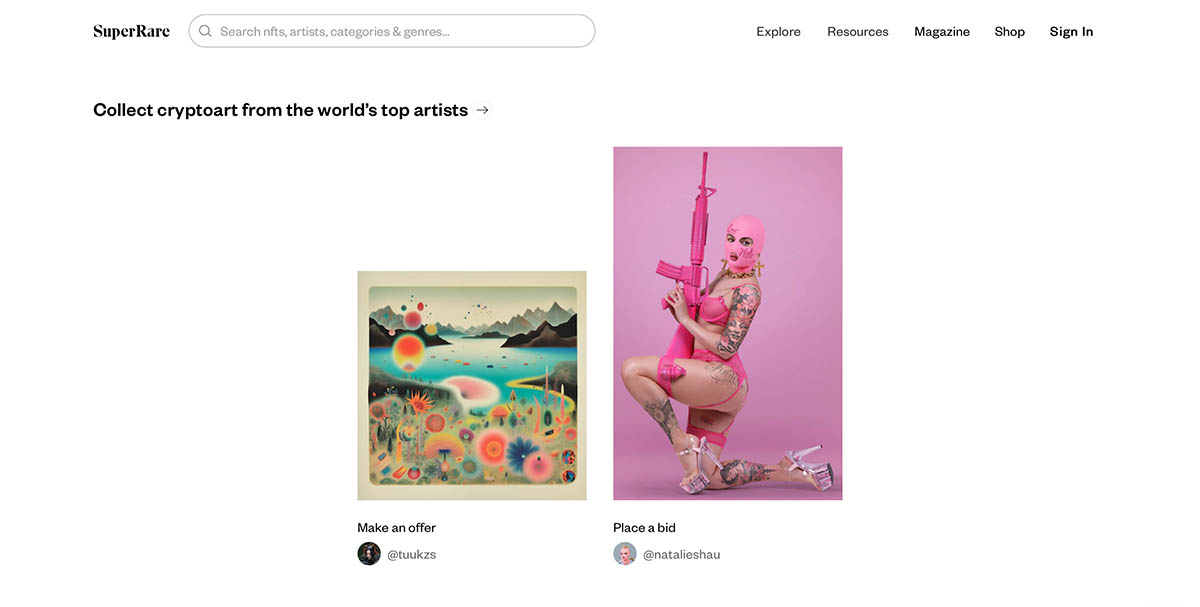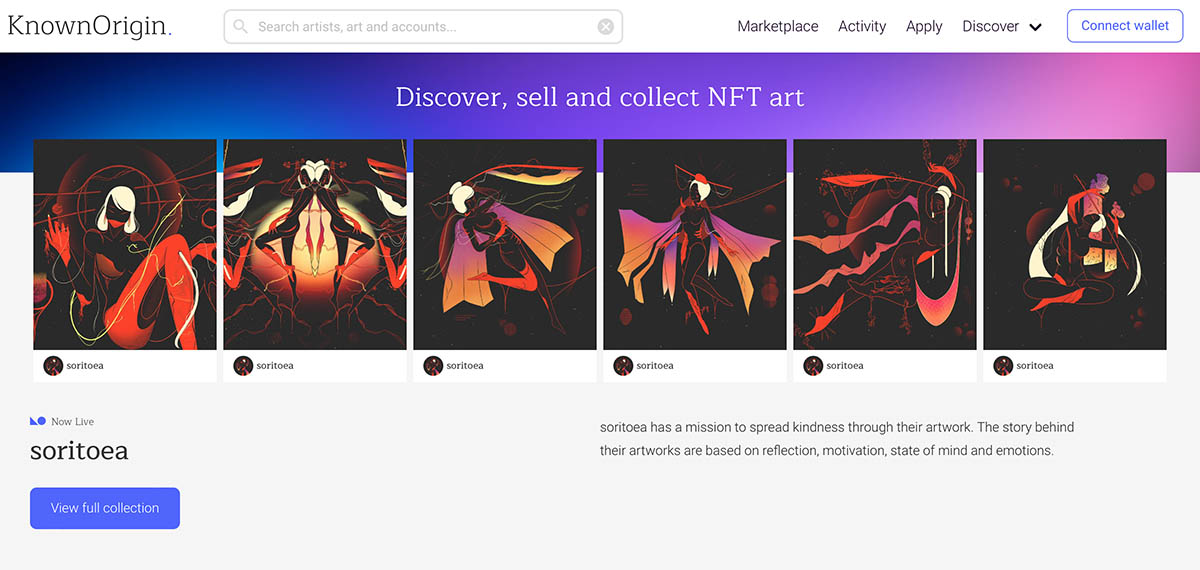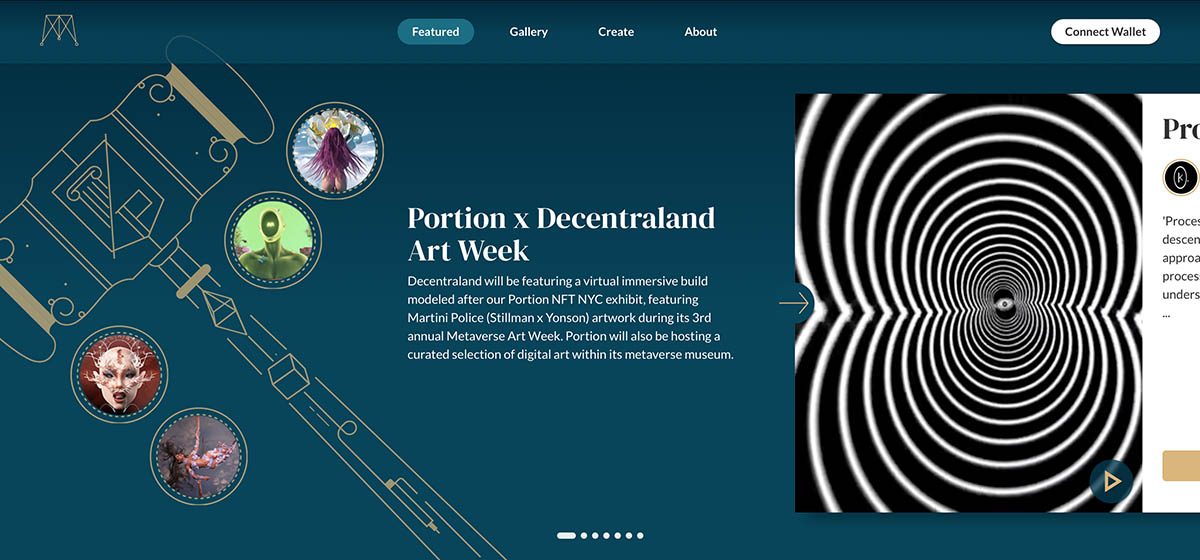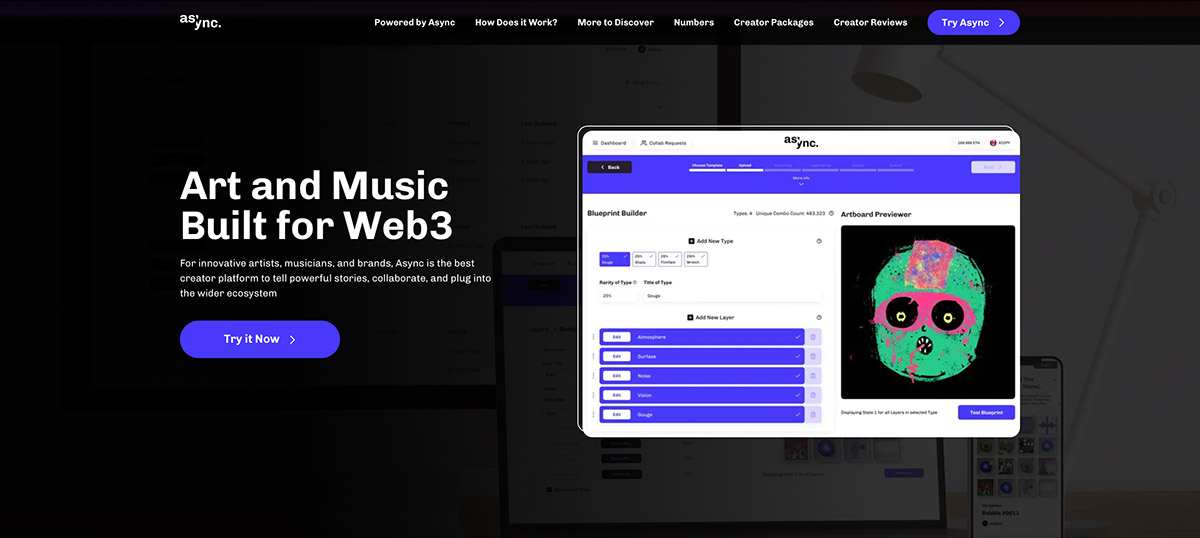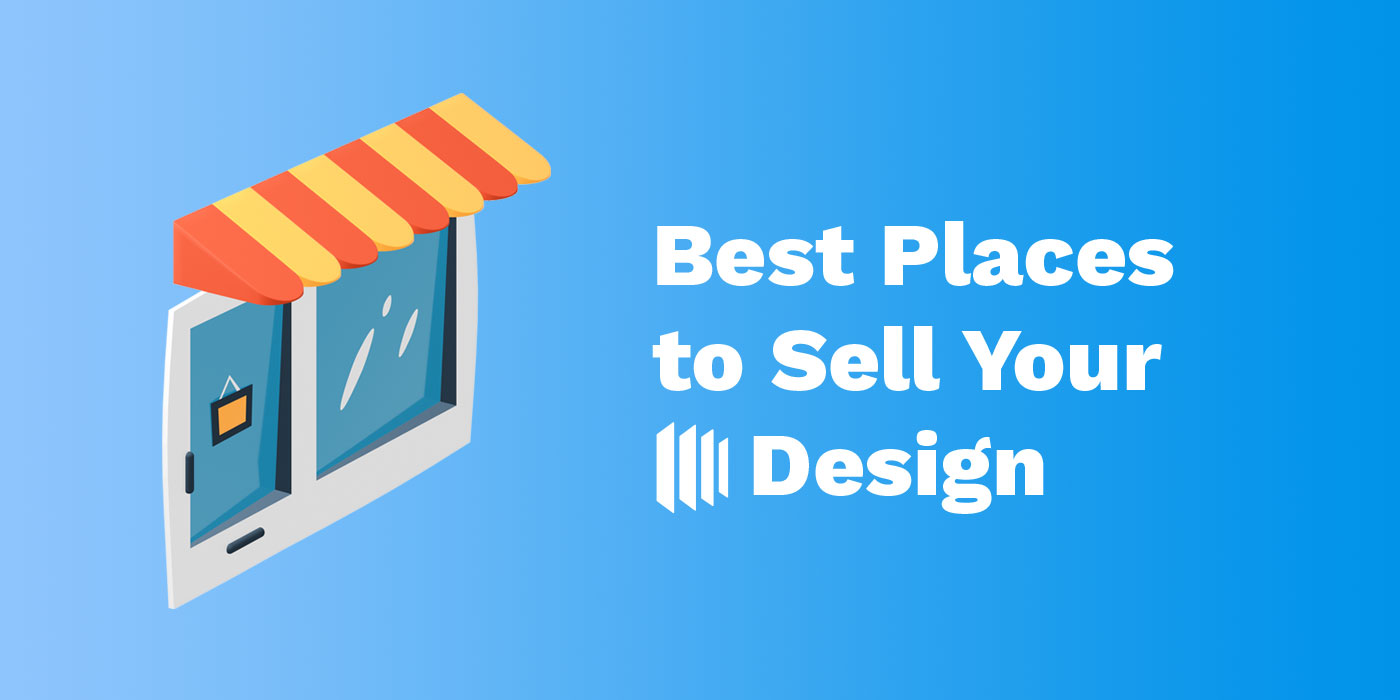The Designest may receive compensation from companies, products, and services featured in this publication. For more details, please refer to our Affiliate Disclosure page.
Making art your profession is not that poetic and accessible as many people, remote from this sphere, think. Simply putting your works out there is not enough; you’ll need to spend time choosing the right online platforms and marketplaces with reasonable terms, active target audience, and other significant parameters to sell art and start your online business. Sounds like a lot of time consuming research work, but good thing we did this for you in this exhaustive review!
The pandemic crisis has changed the rhythm to which modern society beats. If the digital business used to take a predominant role but not the major one, the accents were dramatically switched to strictly online existence. As a result, the digital art market skyrockets, offering a plentitude of various items or services together with platforms to build your online presence and sell art. For many artists, the question “how to sell digital art” got replaced with “where to sell digital art” as the abundance bears a mere confusion, and a creator can feel lost in it. Having your own store or website would be a life-saving option, but what if it’s a passive income plan? You can simply create work and use the already-established marketing tools for selling artwork projects!
Sticking to the idea of efficient time and effort spending and having a vast experience of working in graphic design ourselves for years now, we’ve made a list of the best marketplaces for online sales. No matter what domain you took for making money (digital illustrations, graphic design assets for different software or creating your own physical products), you’ll discover a handful of options to pick from. Selling digital artwork is not only about the market research but the community it revolves around and the profit-beneficial terms of use it implies. So we dove into the topic to spare you some time on the investigation of places for selling digital artworks.
Selling Graphic Design Tools
Sticking to the idea of efficient time and effort spending and having a vast experience of working in graphic design ourselves for years now, we’ve made a list of the best marketplaces for online sales. No matter what domain you took for making money (digital illustrations, graphic design assets for different software or creating your own physical products), you’ll discover a handful of options to pick from. Selling digital artwork is not only about the market research but the community it revolves around and the profit-beneficial terms of use it implies. So we dove into the topic to spare you some time on the investigation of places for selling digital artworks.
Selling Graphic Design Tools
The more people stay home, the more time they have for taking up new hobbies, upgrading the existing skills or refining their approach to what they do for a living. Such a thriving time for providing people with ready-made graphic design tools for fulfilling their artworks! Make sure you have your portfolio ready to be displayed as the majority of online platforms ask to show them what you’ve got before you enter their online marketplace for selling digital products.
One more thing before you start choosing the future homeland for your designs — investigate the terms and conditions about splitting your revenue with the online platform where you sell digital files. Perhaps it would be more reasonable to start with an online store, taking less money as during your testing & adaptation period, it might turn out that the picked website is far from your expectations.
1. Creative Market
Creative Market was our first platform for selling art online. A lot has been changed, but the essence is still there — it’s a beautiful place to sell art online! The website features millions of digital downloads for users who purchase graphics, templates, fonts, brushes, web themes, and photos. You can release an item (and eventually modify it) without having to wait for the staff approval.
Moreover, you set your own fair price for every sold product! Creative Market helps the shop owners to promote their goods via newsletters, seasonal sales, a hand-picked section with the best items and via many other ways. Keeping track of things in your shop is a piece of cake: the transparent stats and analytics help you to monitor all tendencies and buyers’ behavior so as to pick the direction for improvements accurately.
The company also launched a special feature of integrating a shop with Dribbble portfolio, which saves tons of time! Since Dribbble is a daily source of inspiration for thousands of creators, it’s undoubtedly great to show off your recent creations they can purchase directly from the platform.
Speaking of the revenue, the newcomers receive 85% share when the new store is still fresh and growing, but when you stand firmly on your merchant feet, Creative Market will take 50% — nothing personal, just business! It’s still one of the best places to sell art online.
2. Envato Elements
The subscription-based platform with huge online community, where users get unlimited downloads for a fixed price is another place you can embark on selling graphic designs. It’s not only about the graphics, themes and templates: even your videos and audio files can be published, so selling art online is an enjoyable process here.
There’s no need for you to get into the complex licensing system for your digital files, there’s a commercial license covering it all. Besides, you just sell your digital art and don’t have to deal with customer support or products-promoting either, the Elements customer support team got your back when it comes to technical issues and marketing. Start uploading to Elements and get your 50% revenue share!
3. Design Cuts
Tons of discounts and fair deals are a magnet for customers! So when you’re thinking of selling art online and consequently enriching your community base (not mentioning a money-related side of things), you should get in touch with Design Cuts via their form. A curating team is a group of delightful people, always ready to help you with any question.
The uploading process is transparent and easy, you don’t even have to handpick the product tags and worry about them being out-of-place. And if you’ve missed something or made a mistake adding previews, files or description, the review team will either mark this submission, stating the issue, or send you an email.
If you’re not sure where to sell artwork or how to present your brand, portfolio or collection of works and whether it fits in the platform’s concept, take a look at the Product Academy page. It’s a set of 9 free video guides, telling the whole path from goal-setting to actually selling the items.
4. Dealjumbo
Swing by Dealjumbo to sell art online and get your products featured in the next discounted bundle or deal! The website itself is a real treasure for graphic designers as it has so many profitable deals anyone will enjoy. Share the freshest and rarest collections, boosted by a team of professionals, who make your sales skyrocket! The deals attract many customers, who discover this or that author/studio for the first time, so it’s undoubtedly a great opportunity to be noticed and sell products and digital goods.
We’ve been collaborating with Dealjumbo for years, and we simply adore the website’s support team! They’re always so considerate, friendly and welcoming, which is very valuable, especially if it’s your first platform for selling art online.
5. Freepik
Aiming at the exposure to spread the word about your own work is not the last of your concerns when starting a shop to sell art online. Freepik can provide you with a huge community of users, having a taste for high-quality graphic design assets. How does immersion into this online marketplace happens? You register the account and start upload resources: the best 20 files you have for starters, ‘cause they will decide the destiny of your marketplace presence.
When the submission is approved, move straight to filling your account info, including taxes. Consistency and the number of provided digital downloads are two the most important things, don’t lose them out of sight if you become Freepik Contributor. To get into specifics before starting to sell your digital art and learn about more features, please visit the FAQs for contributors.
6. YouWorkForThem
Work for them while earning for yourself! Created by designers for designers, the website’s policy for contributors is fair and square: the profit is split 50/50, adjust the license features yourself, keep track of sales and your profile presence, get recognized via the promotion posts on Facebook, Twitter, Behance, Pinterest and dedicated newsletters. You can generate more revenue by applying for the affiliates program.
After setting up your account, transform it to the contributor’s page and fill out the information forms about your account. You can ask the Support Team to do this for you, just make sure to provide them with the relevant info. Prepare you digital file collection, upload them to the website, add the product’s name, other details and start selling graphic designs!
7. Adobe Stock
Obviously, Adobe doesn’t need any special thorough introduction — this huge corporation provides a gazillion of people (who are your potential buyers) with efficient high-end digital products for creativity and design. And you can join the forces with Adobe and sell digital downloads you created with the world!
To sell art, create an account then turn it into a contributor’s one. You will have questions during the process of submission, it’s okay: the team of professionals in Adobe is by your side on any pressing topic you might have. Build your schedule for uploading the digital products, make it a systematic thing to let it yield results in no time!
8. ArtStation
Did you know that ArtStation is not strictly about displaying and selling digital art online? Operating as Instagram for your illustrations, the website is suitable for distributing any types of assets (Photoshop effects, brushes, fonts and more). You won’t be in the wrong, saying the platform’s main purpose is not financially oriented but nevertheless, it bears benefits. Sometimes the digital downloads, sold badly on one websites, are hot hits on the others as the audience changes. So go for it: experiment with previews, the kit’s volume, types of products in order to find your happy medium and sell art online.
What Dangers to Look Out For?
Needless to say, that putting your digital art prints and files out there arrises the risk of being robbed of these precious talent manifestations. You should be mentally prepared for the fact of encountering your original art on various marketplaces, websites, and social media platforms: sometimes the little crooks get the files, adjust it a little (let’s say, change the color palette or apply filters), but the laziest ones don’t even bother concealing their crimes and sell products of yours shamelessly.
Here comes the tactics map with two possible paths you can fall for in this online business: ignore or no more! Both of these choices are valid, having their strong and weak sides. If you catch some graphic designers, independent artists or studios red-handed on your digital assets distribution, doing via a well-known marketplace, perhaps it worths a shot to message a special department, dealing with content stealing(read a more detailed guide we wrote about fighting digital piracy).
If you can call yourself a person, who’ve grasped the nature of zen and not easily-irritated, then simply ignore all the wannabes as they won’t be able to achieve the same success as you did. In fact, you save the nerve cells as a pleasant bonus of a pacifistic approach.
Selling Graphic Designs: Print on Demand & Merch
Working in graphic design and illustration essentially involves viewing millions of artworks and making those that turn out so fabulous you want to print them on t-shirts, stickers, phone cases, packaging — that’s how mind-blowing they are. Unfortunately, you might never get around to doing it, and the idea gets buried in a pile of more pressing tasks. And people keep asking questions like, ‘’can you use your paintings and illustration for digital art print to sell online?’’
Don’t wait till someone intercepts this initiative, take the lead and outpace everyone! Here’s the list of online marketplaces to fulfill the plan of selling art (even fan art, by the way). And frankly speaking, continuous scrolling through the website in search for information has already lured us into ordering a couple of new sticker packs, t-shirts and a new office mug, the client-oriented service — check!
1. Big Cartel
Even though the website’s name has the word ‘’big‘’ in it, and this resource has a massive base of items for sale, the marketplace refers to itself as a small indie platform for selling digital artworks. The online marketplace has an appealing design, triggering a desire to present your store from the best sides.
All the vendors are offered a vast range of shop page customization, using the collection of free editable templates and themes, alongside coding the features you need (if you have enough skills and time for that). The handy and straightforward navigation significantly facilitates both placing the product and shopping for high-quality goods.
Big Cartel leaves nothing but a good impression and fosters a desire to sell art online while simultaneously dropping by other vendors’ shops to find curious items.
2. Society6
Every time we scroll through Behance or Dribbble searching for inspiration, we stumble upon digital art prints that will look fantastic on a new t-shirt or new inspiring interior poster. The first question popping up is, “oh, does this author sell digital art on Society6?”
Right after entering the art market, your trust is conquered by uncluttered and stylish design, comfortable categories navigation, and an enormous diversity of items just about ready to jump into your cart. The Society6 team takes over managing the artworks’ printing and distribution to recipients — just as easy as visiting a local printing shop, but less time consuming. Make sure you settle all the shipping costs questions. Then you just need to upload the files fitting all technical requirements and provide a constant flow of new gorgeous digital art prints! Can’t wait to start selling digital artworks? Grab this registration form link and start making people happier with your illustrations and patterns!
3. Zazzle
Team up with customers themselves to create inimitable products they’ll be excited to receive! Zazzle is charged with multipurpose functionality, making it possible not just to purchase a ready-made end product but edit the digital art print in real-time the way heart desires. Meanwhile, you’re generating a profit by your content’s monetization.
The item’s adjustment features make your head go round! But it’s for the best because with a free choice of customizable elements for this or that print, your illustrations are more likely to never be rejected due to some teeny tiny detail as it can be promptly fixed according to the client’s taste.
4. INPRNT
This website is aimed at selling graphic designs in the format of art prints, device cases, wall art, and framed work. To enter, you’ll be asked to upload 3 artworks as a test that will be reviewed by artists already running their own store there. When your portfolio is approved, your account gets automatically transformed into the vendor’s account, then sales, recognition and success await!
Speaking of the site’s design, it looks kinda old, but it doesn’t interfere with usability of the print on demand services, so it’s not a big deal. All users can start searching for items for personal use either in categories of goods or by clicking art style k they like and checking out the offered things a digital file can be printed on.
5. Etsy
While earlier Etsy shop used to be known solely for being an online store for selling physical hand-crafted items by creators from all over the world, now it’s a pretty convenient platform to sell digital artworks as well. Bear it in mind when you choose a source of monetizing your works to earn passive income.
The registration process goes smoothly but be careful and entirely sure about the info you provide for setting up an account as the future impulses to change the shop’s name or email address used to log in will be impossible. Every product (called ‘’listing’’) is placed for a small fee of 0.20 cents for a limited period, and each purchase is taxed at the rate of 6.5%. If you’re confident about how your listings are filled out according to all the requirements, you can opt for Etsy Ads, boosting your shop’s rating and sales.
A little titbit from our own website experience. Selling digital artwork and assets aside from prints for physical products is possible on Etsy, but in a form of download link. It’s not a super profitable plan, we don’t recommend trying this out.
6. Redbubble
It seems like Redbubble has the largest placeholders’ base for printing artworks among the other online stores. There’s a plethora of categories, types, and variations of digital assets that allows seeing your digital art products placed on the most unexpected things. But, of course, the passive income becomes more beneficial when you upload tons of digital products!
Add your precious masterpieces to online store, choose what item goes better with it, set your own prices, make sure the shipping costs and other details are all set, and watch people go nuts about your glorious artworks! Redbubble is about sustainability, which means all items are manufactured only after the order request. How about earning some money and save the planet at once?
What About Selling Digital Art and Physical Items?
Kill two money-birds with one stone, as nobody forbids you from doing digital art sales and print-aimed designs for physical art items! The initiative is yours to take action, especially if you firmly believe it’s manageable. Besides, there exist some time-tested techniques of balancing these different styles of online sales — creating art and splitting the items into smaller pieces.
Let’s say you have a set of cute drawn art patterns with animals. Since the original assets are peacefully resting on your computer, how about giving them a little makeover? Listing them for sale on Creative Market is out of the question (maybe it even was the main goal to start selling there), but how about dividing the patterns into separate cliparts with animals and placing every digital product on Society6 or Etsy shop? Cliparts are digital download products of high value for print on demand services, allowing the customers to apply those to their own physical items without having the illustration skills. As a result, you meet the needs of different target audiences and earn more traffic!
It’s a bit more complicated with mockups or Photoshop or Adobe Illustrator effects, but a pinch of wit and inventiveness can get you very far in life. Stick to the same plot by splitting the full versions into smaller ones or start selling on stock marketplaces to sell graphics. Their beauty is in simplicity of digital product preparation: no wordy product description or excessive preview presentation required. Among the platforms to consider for this activity are Freepik and AdobeStock.
Sell Digital Art Online as NFT
For those who are hyped up for modern trends, it won’t be flash news that the NFT marketplace has swooped into art business and gave a new trend whose arrival couldn’t be better timed. The massive frenzy of acquiring the rights for this or that artwork skyrockets! Your wealth and glory are just one well-promoted and successfully sold item away. Bam! And articles about you are flashing everywhere! Just like it happened to Beeple — the sci-fi digital artist, who sold his collection of everyday illustrations “Everydays – The First 5000 Days” for $69 million. Even if you’re not ready to conquer the NFT space, knowing how the marketplace business model works and what’s hot these days in online galleries is very rewarding. And maybe there you’ll sell original artwork of yours!
1. OpenSea
Get your Ethereum wallet or other payment gateways ready for signing up on this leading marketplace for selling and buying digital art, as it’s the obligatory condition for registration. Then go on rummaging through a pile of all possible items to dig around and eventually get armed with a precise idea about price formation. This knowledge will be invested in selling digital downloads you make. All the other marketplaces you’re about to see in this selection are presented on OpenSea, which means this platform is in high demand among buyers and artists. Whenever you’re ready to start selling, consult this tutorial article for beginners, and may the force be with you!
2. Foundation
Watch out for getting sucked into this void of remarkable digital arts and photos! You’ll wallow in masterly-crafted assets dedicated to all sorts of topics, movements, social phenomena, memes, political events, and other pressing topics. This digital gallery is made into an easy-to-navigate auction platform, displaying both the renowned artists and talented beginners embarking on their way to the top. When you sell your NFT, a 15% service fee is taken from the total sale price, while your fairly-earned 85% fly to your wallet.
3. SuperRare
Find out if the platform’s name justifies itself by entering the community of dedicated digital artists. Getting the Instagram deja vus is fine, the website’s constructed the way you don’t need to struggle with unfamiliar navigation, cluttered categories or puzzling workarounds.
When you get tired of racing for recognition and tokens, have some rest and dive into SuperRare Editorial — you’ll surely find some attention-worthy pieces. Who knows, maybe if you strive for the most successful creator on SuperRare, you’ll get featured in this selection too, and it’s surely a powerful boost for your exposure.
4. KnownOrigin
The future is with NFTs, they say, then it’s vital to be familiar with it as well as possible. Reach out to the large audience (your potential buyers) via selling digital artworks they will add to the collection. The new drops are presented so masterly you rush to these pages and start investigating each piece carefully. The library is divided into 2 marketplaces: the primary (featuring the rarest items) and secondary (consisting of re-listed artworks by prominent collectors). The diversity of artists fascinates, making it impossible to leave the website empty-handed once you have an intention to purchase some artwork.
There’s no complex process of setting up your account in order to sell digital art. As usual, all the artists need to have a digital wallet (such as MetaMask.io or TrustWallet) set up before diving into the sea of creativity. After getting approved on the website, you need to know that the first NFT sale would bring you 85%, while 15% goes to the commission fee. For all other sales, the Seller gets 87%, and the commission fee equals 13%. For a secondary sale (and all sales made after the first sale), 87% goes to the Seller, 10% goes to the Artist, and finally, 3% goes to the commission fee.
5. Portion.io
From the first moment on Portion, it seems you’ve accidentally clicked the website of some law firm or educational portal about economics — anything but the platform to sell digital artwork. The home page design is presented engagingly. What about the marketplace itself?
The portal to it starts with the ”Launch app” button, leading to the robust world of art… and outdated Internet design, applied to the ”discovering assets” page. It looks antique compared to the surrounding categories. This little flaw is outshined by the animated works decorating the gallery.
I won’t be wasting time going through the registration process thoroughly: it’s the same as for the previous platforms. You should ask yourself the only relevant question before signing up: does this marketplace suit my creative intentions and preferred style?
6. Async
All hail to the websites, having the information placed to the point, no shadowed areas. You come, you like, you purchase! The stakes are rising when you find out some of the sold art come with layers you can adjust and customize! So cool, isn’t it? The video by Async tells about it in detail, don’t forget to watch it.
Parting Words to Creators
Starting something new is always tough for a digital artist as the unknown appears ten times more unexpected and scary, than it actually is. The key to troubleshooting the possible menaces when you want to sell digital art online is getting fully-prepared information-wise: read the forums, scrutinize the stated terms and conditions, explore marketing tools, ask for a feedback from the artists, that have achieved a certain level on this or that platform.
Maybe the following phrase would sound cheesy, but don’t give up after a first downfall. Even the most experienced creators have various difficulties occurring on their way that are challenging to cope with. What should be done in this case scenario? Make a reasonable conclusion, note the strategy and business model you used, examine the situation and try to put forward a theory on what might have gone wrong. Plus, don’t froget to learn more about the marketing tools! Again, the information is your mightiest power move so hopefully now you know how to sell digital art and found this article helpful.
Frequently Asked Questions
If you’ve never sold digital art online and want to test the waters, I would highly recommend you start with Creative Market. The registration process is easy, the website navigation is user-friendly and the support team is super friendly, too! All you need to do is create your account, add the products you want to sell, set the price and fill out all the categories (which is also intuitive). Prepare all your digital art for sale and look for more details in our article.
If you’re thinking of providing the potential customers with art assets for creating their own graphic designs, templates or showcase files, then you’re better to check out the social media platforms and marketplaces like Creative Market, YouWorkForThem, Envato Elements, or DesignCuts. In case of POD and physical products, what you’re looking for is Zazzle, Society6, BigCartel or Etsy. Selling trendy NFT artworks would be possible at Foundation, OpenSea, KnownOrigin. There are plenty of platfroms and apps to sell digital art to choose from, so take your time!

